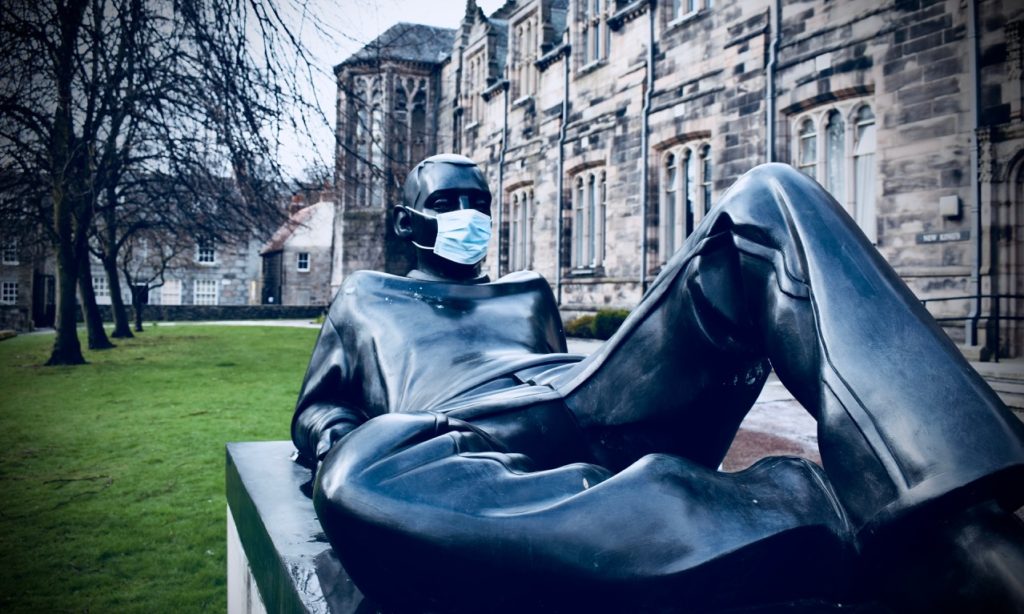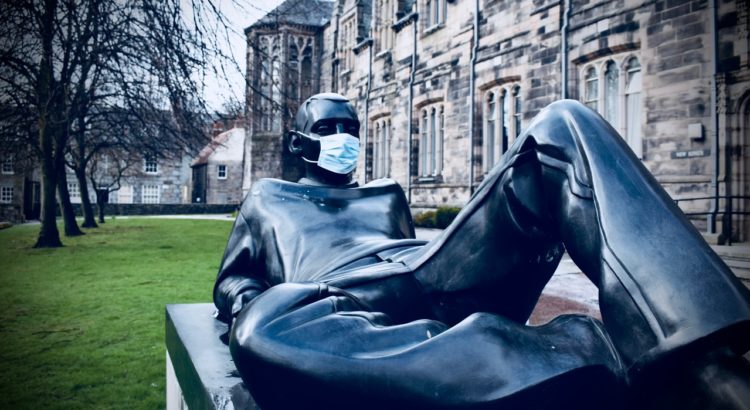
Comparing school-age cases in England and Scotland during autumn 2021 shows an effect
By Dr Steven Hammer
Mask mandates in high-school age children were continued in Scotland in the Autumn 2021 school term. At the same time in England, masks were made optional. We can compare the difference in case counts in both countries and see the effect of this difference in policy.
Firstly, we can graph the cases recorded in both countries. Data are available from the UK Government Coronavirus Data portal for the English data and from NHS OpenData (run by Public Health Scotland). The English data contain PCR and LFT positive results; the Scottish data only contain PCR positive results (from Pillar 1 and 2) data. This may inflate the weekly case counts in England compared to Scotland. However, this is the only data available for England that shows the age groups that correspond to primary and lower secondary (0-14) and secondary/upper (15-19) school ages.

The change in cases after the start of the school terms is different in each country. In England, cases in the 0-14 age group increase after the autumn term begins, drop in week 43, then rise again towards the end of term. For the 15-19 age group, however, weekly cases stay at around 25,000 until week 49.
In Scotland, there’s a large peak in weeks 33-36 for both age groups. This rapidly reduces, staying at around 1,250 cases per week in the 15-19 age group, and around 5,000 per week in 0-14, with both age groups rising near the end of term.
How do these weekly case rates compare to cases in the summer holidays in each country?
If we take the weekly cases three weeks before the term starts as 100% (week 32 in England, and week 30 for three weeks before the Glasgow school term in Scotland) we can see the relative increase in each country.

In England, cases rise to around 400% (four times the weekly cases in the summer break) in 0-14 by week 42. However, they stay at around the same rate in the 15-19 age group. The picture in Scotland is quite different. There’s a large rise (to 900%, or nine times the weekly case rate in the summer break) in 0-14 by week 36, and up to around 550% in 15-19 during week 34.
Was this large rise due to a failure in masks? Cases in the mask-mandated 15-19 age group in Scotland rose to around 300% less than in the unmasked 0-14 age group. Does this indicate that masks helped?
If masks were the driver of this lower increase, why wasn’t there a much larger rise in England? Weekly cases barely rose throughout the term in 15-19 in England, despite the lack of mandatory masks.
The increases in Scotland could all be down to different increases in testing. We can compare the England and Scotland PCR testing rates (English PCR data is from Test and Trace data; Scottish data is from NHS OpenData as before; both datasets contain Pillar 1 and 2 test results) to see if the rises in testing match the rises in cases.
Only 0-19 years testing data is available for England, so 0-14 and 15-19 weekly tests in Scotland have been summed to allow a direct comparison.

The initial spike in cases in Scotland corresponds to a spike in testing. In England, testing rates rise to week 37, falling in week 45, then rising again towards the end of term.
The tests and cases data can be compared by calculating normalised weekly test and case data. Both datasets are scaled to lie between 0 (for the minimum weekly tests or cases) and 1 (for the maximum) between weeks 28 and 50. Both test and case data can be graphed on the same scale to show if they increased at the same time.

The number of weekly tests rises (peaking in week 37) before weekly cases peak (in week 42) in England. In contrast, the Scottish test and case data both peak in week 36, before beginning to diverge in week 44. The rise in cases seems to be mainly driven by rising numbers of tests.
Were more people getting tested because there was more SARS-CoV-2 around? One way to confirm this is to calculate the test positivity. This shows the percentage of tests that have a positive result. If test positivity rises, that implies an increase in the number of people who have the virus.

Test positivity rises and falls with the peaks in testing data in both countries. However, the result that stands out most is how low the test positivity is in England (around 15% throughout the autumn term) compared to Scotland. Masks were not mandated in any schools in England. In Scotland, with mask mandates in secondary schools, test positivity is more than twice as high (around 40%).
Conclusion
The enhanced restrictions and secondary school mask mandate seems to have had a negative effect overall on weekly cases in primary and secondary school age groups in Scotland. Test positivity is higher there and increases in cases and testing at the start of the autumn term were higher than in England. If masks and more restrictions reduce transmission, why did Scottish young people have greater increases in weekly cases and higher test positivity than English young people in autumn 2021?

